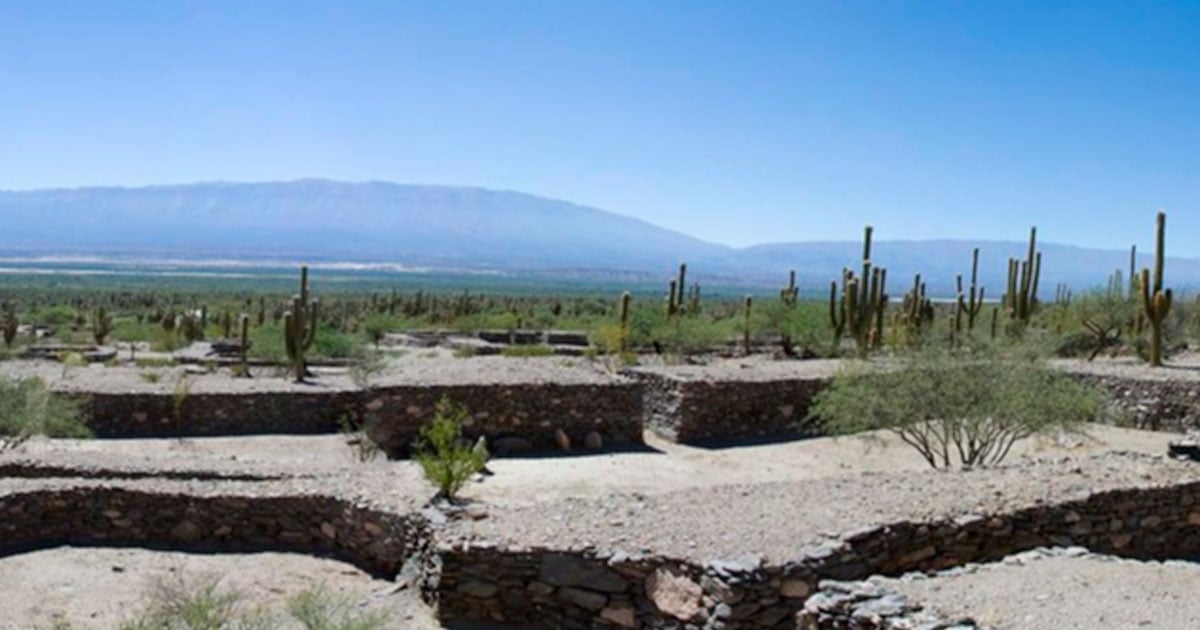Quilmes Ruins, Sacred Place of Diaguita People
Argentina is a vast country revered for its many natural wonders and beautiful scenery. Less well-known, however, are its historic sites. In fact, some of the most important pre-Columbian ruins, such as the Quilmes site, are to be found in Argentina. They are the remains of a major native American urban settlement that flourished for hundreds of years and they offer a unique insight into an ancient society in this part of Latin America.
The History of The Quilmes Ruins
The ruins are in the Calchaquí Valley, an area of mountains and semi-desert in the Tucumán Province, in the north-east of Argentina. This area had a remarkable variety of landscapes and is renowned for its geographical diversity.
In this arid and stony landscape, the Quilmes people, who belonged to the Diaguita culture, created a sophisticated community. They built an intricate irrigation system which allowed them to be self-sufficient in the harsh environment.
The Quilmes built the city in around 700 AD and it achieved its zenith in the 9 th century AD. We no longer know what the original inhabitants called the settlement, but it is now named after the long-extinct Quilmes people. The findings indicate that the residents were technologically and socially advanced. According to the scant sources available on the inhabitants of Quilmes, it appears that they were ruled by caciques or chiefs.
The area around the settlement is believed to have been rich in minerals. This led to an invasion of the area by the Inca Empire. The Quilmes people, however, were courageous warriors who used the rugged landscape to their advantage. Despite being outnumbered, they were able to repel the army of the Inca in approximately 1480.

Machu Picchu, built by the Incas (Jazbinsek, F/ CC BY-ND-NC 2.0)
During the sixteenth century the Spanish settled in what is now Argentina. At its height, it is believed that 5,000 people inhabited their town and they traded extensively with other Pre-Columbian societies in the Andes. They also made several attempts to conquers the Quilmes in the Calchaquí Valley. However, the were able to defy the Conquistadors and the present-day ruins were their chief bastion.
The diseases brought by the Spanish, as well as the consistent conflict, resulted in a drop in the population of the town. The Europeans launched a massive attack on Quilmes and finally conquered them in 1665. In total there were only 2,000 survivors and they were sent to a reservation south of Buenos Aires.
- The (Almost) Forgotten History of The Mission of San Ignacio Miní
- Analysis Shows Children were Given Drugs and Alcohol before Ritual Sacrifice 500 Years Ago
- Genetic Analysis of a Frozen Andean Mummy Reveals a Previously Unknown Lineage

Remains of the stone walls at Quilmes (Bacon, D / CC BY 2.0)
The Quilmes settlement in the valley was ultimately abandoned after several hundred years of occupation. While on the reservation, the Quilmes people suffered greatly and eventually died out. They were declared extinct in the early 19 th century.
The modern city of Quilmes in Buenos Aires Province was built on the site of the reservation after the loss of the indigenous people. The few remaining descendants of the Diaguita people regard the ruins as a sacred place.
What the Ruins of Quilmes Offer
The ruins are extensive and covers some 30 hectares. The area includes a large number of galleries and buildings that have been built on the side of a mountain. This section of the settlement is a typical pukará, or hillside fortress, that was common in this part of Argentina and the rest of the Andean region before the arrival of the Europeans.

The ruins built on the side of the mountain at Quilmes (Jones, K / CC BY 2.0)
Other areas of the ruins are situated on the flatlands. The settlement covers a large area of the mountain and the builders erected stone platforms at varying levels. Upon these they constructed spacious buildings. The ruins almost half-way up the mountain testify to the considerable engineering capabilities of the Quilmes.
All of the buildings were constructed in stone - a plentiful material in the arid region. Much of the settlements was once enclosed by high defensive walls, but these are now high, fallen mounds. Since most of what remains of the ruins are the walls, the plans of the houses can still be seen, and it is easy to determine the settlement’s well-planned grid layout. The Quilmes settlement had a number of straight streets and these can still be seen.
Visiting the Quilmes Ruins
There is public transportation to the site from both Cafayate and Tucumán City. An entrance fee payable, but it is also possible to book a tour of the site online. Bike tours to the site are an enjoyable option for those who enjoy exercise while adventuring. Climbing the mountain above the ruins, where the caciques once resided, is a superb way to see the ruins below and the museum has many artifacts from the original settlement on display.
Top image: The Ruins of Quilmes, Argentina. Source: CC BY NC 2.0
By Ed Whelan
References
Casciero, A. J. (2011). Vestiges of a Lost Civilization. Americas, 63(2), 40-45
Available at: https://search.proquest.com/openview/0490462e4f51e6059fc913432808a442/1.pdf?pq-origsite=gscholar&cbl=364
Endere, M. L. (2005). Talking about others: Archaeologists, indigenous people, and heritage in Argentina. Public Archaeology, 4(2-3), 155-162
Available at: https://www.tandfonline.com/doi/abs/10.1179/pua.2005.4.2-3.155
Sarmiento, F. O. (2015). The antlers of a trilemma: Rediscovering Andean sacred sites. In Earth Stewardship (pp. 49-64). Springer, Cham
Available at: https://link.springer.com/chapter/10.1007/978-3-319-12133-8_5

















